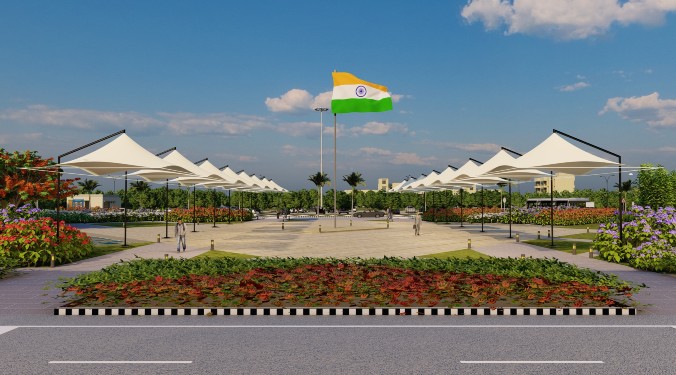“These buildings [skyscrapers] are important also, beyond their sheer height, because they push the limits of engineering so that it can solve problems for the rest of the built environment,” says Daniel Safarik, Editor, Council on Tall Buildings and Urban Habitat (CTBUH)
Tall buildings, which can be criticised as pinnacle of vanity, are important to urbanise the world. Tall buildings can also be a part of the solution to global climate change. The CTBUH — which has made itself an authority on the official height of tall buildings — adds more weight to a skyscraper’s reputation with its “The World’s Tallest Building” rankings. The council also promotes tall buildings that are innovative and advance the typology, through its publications and award symposiums. In an email interview with Dibyendu RoyChowdhury, Daniel Safarik shares CTBUH philosophy, the evolution of tall buildings, and how India can reach the zenith of tall buildings too.
CTBUH studies and reports “on all aspects of the planning, design, and construction of tall buildings.” What are the most important aspects for a tall building?It is very difficult to narrow down to a manageable set of answers. Clearly, any building of any height would fail without a well-engineered structure. Wind engineering takes on a particular importance with tall buildings, as wind speeds increase with height, and the height-to-width ratio of a building becomes more of a factor. And all buildings have a responsibility to meet the street – that is, operating at the human scale where humans interact with them, regardless of their ultimate size. It is where tall buildings are largely deficient, but we are beginning to see attempts to address that, and this is where we focus our energies.
From steel-framed buildings in the late 19th century to Fazlur Khan’s “bundled tube” concept and Burj Khalifa’s techno-mysticism, how has the concept of tall buildings evolved?The first two examples you cite are pragmatic responses to the essential real estate concern — how to maximise profit on a land. The answer was “go higher.” To do that, innovations like the steel frame, the elevator, and the bundled tube were necessary.
Your choice of describing Burj Khalifa as an instance of “techno-mysticism” is interesting. The Burj Khalifa does represent a very small group of super- and mega-tall buildings whose primary purpose is to achieve height for “its own sake.” I don’t think it’s necessary or useful to place a judgement on which is better.
The financial pro forma for a building like the Burj probably does not make sense if we only consider the building itself. When we consider that its developers also owned land around the Burj and could construct more ordinary buildings at a lower cost, or sell this land off to other developers who would then advertise that their projects are “near the famous Burj”, there is indeed an economic justification for doing so.
These buildings are important also, beyond their sheer height, because they push the limits of engineering so that it can solve problems for the rest of the built environment. Skyscrapers are some of the most heavily engineered structures on the planet. The metaphor we use is that skyscrapers are like the space programme. There was no immediate commercial justification for putting a man on the moon or a rover on mars, but what we learned from those experiences.
It’s not just about the makeup of our galaxy, but how our technologies can perform in all kinds of extreme conditions is very valuable, scientifically and commercially. Indeed, there is a bit of “techno-mysticism” around mega-tall towers like Shanghai Tower and the Burj. These are impressive achievement, and they answer the question, “Can it be done?” But what is most important is that they ask the question, “What else can we do with the knowledge we have gained?
“The World’s Tallest Building” by CTBUH is widely considered to be an authority on the official height of tall buildings. What are the most important criteria you look upon to enlist a building in your rankings?“The World’s Tallest Building” was developed because there were an increasing number of competing claims about the height of buildings that were close enough in height, and a decision could not be made simply with the naked eye. There were no criteria in place for the point from which the height was measured. That is what we set out to do.
Our three basic criteria are “height to tip,” “height to architectural top” and “highest occupied floor.” The “height to architectural top” determines the world’s tallest title. Our height criteria have occasionally been adjusted to reflect changes in the typology and continue to be a subject of debate.
The idea behind making “architectural top” the determinant of the ultimate ranking has to do with the permanence of the design intent and the fact that this is the most obvious form-giving characteristic of the building when viewed from outside and against other buildings. The “tip” could include objects that may change or be removed over time, such as antennae and warning lights. Many buildings do not have flat roofs but extend into sculptural points far beyond their highest occupied floor.
CTBUH has a number of working groups to produce a relevant technical guide or other tangible output for tall buildings. How do the groups help in planning, design, construction, and management of tall buildings?Our working group participants report that participation in the groups lead back to improvements in their working methods in their companies and increased business from clients who perceive them as experts. Like many professional associations, CTBUH provides a framework to formalise informal professional and academic discussions among colleagues from different companies, countries and disciplines. Most participants are leaders in their respective fields and extremely busy with commercial work but recognise that there can be no moving forward in development of technologies and methods as an industry if we only repeat the same low-risk practices and don’t try to solve persistent problems.
What is your opinion about the future of tall buildings in India? Can India compete with emerging countries like China?On a fundamental economic basis, India is already competing with China in terms of population growth and in particular, urbanisation. According to the UN Population Fund, India is only 29 per cent urbanised while China has hit 42 per cent. So India still has much more urbanising left to do. We would like to gain more knowledge about the activities in India. Currently, there is a good deal of opacity of information coming out of India, so it is difficult for us to determine statistics at the same level of depth that we do in other highly active countries. Therefore, comparison is not possible at the empirical level as we would like to.
As far as the future is concerned, as India not only urbanises but rises as an economic power, we will see not only more tall buildings but better designed and constructed ones and a higher level of transparency and information about them because the Indian economy will be too large to ignore, and it will be stitched into the global business world, which relies on transparency and data to function.
How is CTBUH playing its role in promoting tall buildings around the world?I think it is an oversimplification to say that CTBUH is “promoting tall buildings around the world”, because it leaves out the dimension of quality. The tall building is not an optimum solution for every situation where shelter needs to be built. And, many tall buildings are of poor quality, have a standoffish relationship with the cities they inhabit and consume huge quantities of energy.
At the same time, we believe that tall buildings are both inevitable in an urbanising world and can be part of the solution to global climate change and the poor living conditions. We promote tall buildings that are innovative and advance the typology, through our Web and print publications as well as through programmes like just concluded 2014 Awards, in which we awarded One Central Park of Sydney “best tall building worldwide.” Although this — and many of the buildings we have awarded in the past — is by no means the tallest in any jurisdiction; it is one of the most important. It uses its height to do positive things for the environment which can’t be done in shorter buildings like reflecting light into multiple areas depending on when it is needed and to grow massive amounts of vertical greenery that not only shade the building but help cool its microclimate and extend parkland into the sky.
There is nothing inherently sustainable about a tall building by itself. With so much money and science go into tall buildings, their size means that when a tall building is deployed as a “good citizen” with respect to the environment — integrated, connected, efficient and a provider of public space that did not exist before — its status as a representation of the people’s values becomes important. That is what we try to promote through our conferences, working groups, awards programmes and publications.
5
Cookie Consent
We use cookies to personalize your experience. By continuing to visit this website you agree to our Terms & Conditions, Privacy Policy and Cookie Policy.









